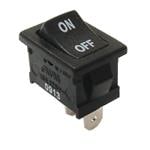Kyocera develops transmission-type metasurface film to redirect radio waves
Kyocera has developed a new transmission-type metasurface film capable of redirecting radio waves in a desired direction. This innovative metasurface film can be applied to surfaces such as window glass and acrylic stands, expanding the service area of millimetre-wave 5G and 6G networks while maintaining aesthetic considerations.
Millimetre-wave signals (28GHz band) used in 5G and even higher frequency bands under consideration for 6G have a high degree of rectilinear propagation. As a result, obstacles can disrupt the line-of-sight from base stations, leading to degraded communication quality. To address this challenge, Kyocera has been developing transmission-type metasurface plates that can bend radio waves from base stations. The newly developed transparent and flexible metasurface film offers a solution that prioritises both aesthetics and ease of installation. The technology allows users to select the appropriate solution based on environmental needs, such as choosing the conventional substrate-based metasurface plates for durability or the new metasurface film for aesthetic sensitive areas.
Key advantages of the new film
Thin, flexible, and transparent film for easy installation
With Kyocera’s proprietary element structure, the film maintains high radio wave refraction properties comparable to conventional metasurface plates while achieving a flexible film form factor. It consists of three layers: an adhesive layer, a metamaterial layer, and a protective layer, with an overall thickness of approximately 200μm. This ultra-thin structure allows for easy installation without special construction, enabling simple attachment to windows, acrylic stands, and other existing structures to function as a radio wave relay point for expanding service areas.
Additionally, the metamaterial layer incorporates transparent conductive electrodes, achieving a visible light transmittance of over 80%. This ensures minimal impact on the aesthetics of the attached structure while allowing for installations in environments where maintaining scenic integrity is essential. Furthermore, its flexibility supports installation on curved surfaces.
Customisable sizes and configurations for flexible network design
In general, the coverage area of metasurface films and plates increases in proportion to their size. Conventional metasurface plates can be custom manufactured in different sizes, but their rigid nature makes resizing difficult after production. In contrast, the newly developed metasurface film can be cut to the desired size post-production and combined with multiple sheets to create a larger refraction surface. Additionally, the refraction angle can be selected from a range of 0 to 60 degrees, allowing for highly flexible beamforming design and optimised service area expansion.
Experimental results using 5G millimetre-wave signals
Kyocera conducted tests in an indoor millimetre-wave (28GHz) 5G environment to evaluate the effectiveness of the metasurface film. In these tests, a mobile device was placed in an area with weak signal coverage from the base station, resulting in low signal reception. When the metasurface film was applied to a window glass, the transmission speed was observed to improve significantly, with download speeds increasing by up to 2.7x and upload speeds improving by up to 5.2x.







